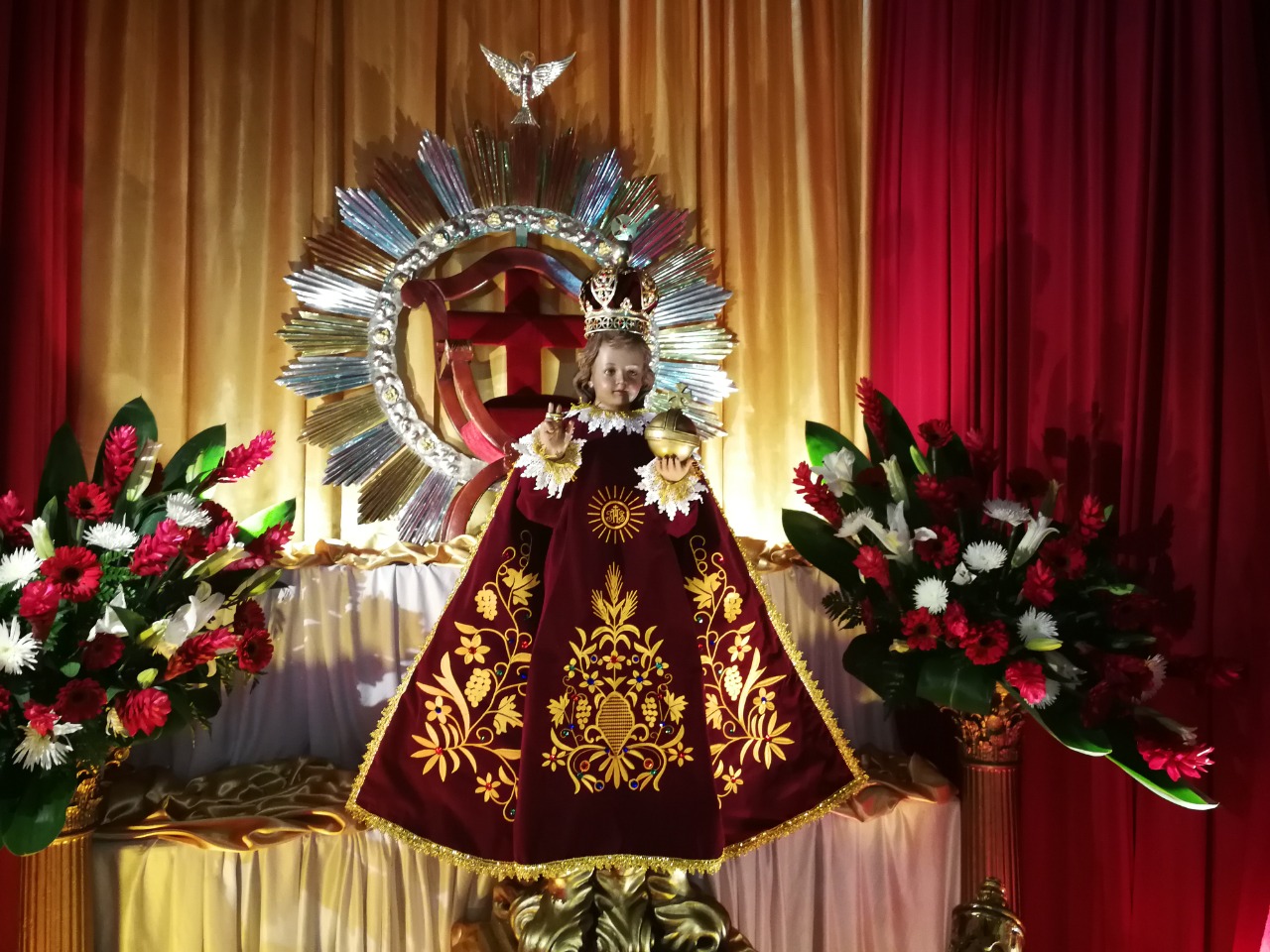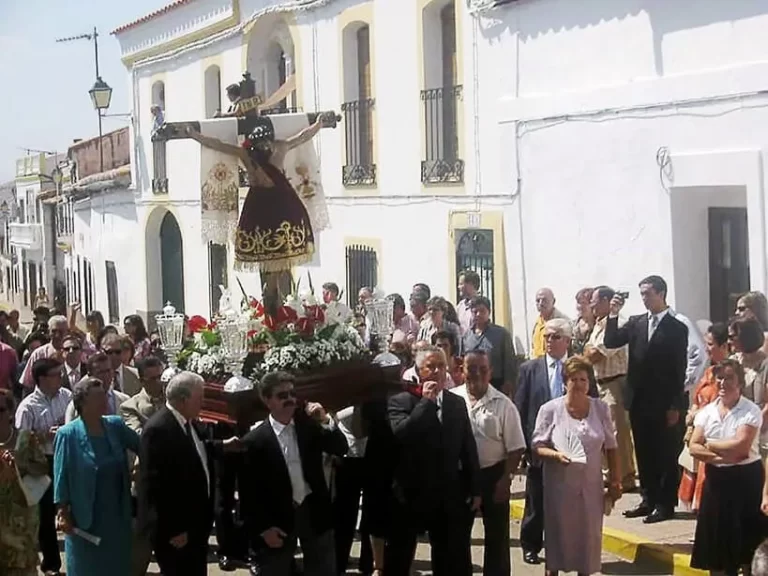The most beautiful litanies to the newborn child of God
Litanies to the child god consist of various very short prayers dedicated to the child Jesus, in order to request favors from God through the child figure of Jesus, learn more about them by reading this article.
Litanies to the Child God
These beautiful litanies to the divine child Jesus have a very relevant spiritual content for every Catholic Christian, although the litanies are also used in other religious currents, with Judaism and Orthodox Christianity, in Catholicism it is used very frequently.
They come from Jewish worship and consist of a varied series of requests that are requested of the child God, are used in processions and important religious services, or simply by people who only need to request a favor from God.
The litany represents for many a repetitive supplication that at the beginning of Christianity was called Kyrie, which was probably the original form of the litany, it was widely used in Asia and in Rome since the beginning of our time.
It was approved as a religious prayer at the Council of Vaison in 526 AD where the following was expressed through a decree:
“Let that beautiful custom of all the eastern and Italian provinces be maintained, viz., that of singing with great effect and compulsion the Kyrie Eleison at Mass, Matins, and Vespers, because such a sweet and pleasing song, though it will continue day and night without interruption, it could never produce disgust or weariness.”
In the case of the litanies to the divine child Jesus , there are so many that it would really be impossible to describe them all. In this article we will see the most important ones and those that are used above all in Latin American countries and the Hispanic world.
Litany of the newborn baby Jesus
Although it may present some variations, this litany to the Child of God is one of the most used in Latin American cities, it serves to request health and cure illnesses, it must be performed in quiet places or in temples, chapels or churches, it says as follows:
“Newborn Child We all praise You, Powerful Child We all praise You, Kind Child We all praise You, Humble Child We all praise You, Venerable Child We all praise You, Faithful Child We all praise You, Creator Child We all praise You, Savior Child We all praise You, Child Comforter We all praise you”.
“Laudable Child We all praise You, Glorifying Child We all praise You, Merciful Child We all praise You, Spiritual Child We all praise You, Son of Mary We all praise You, Model of Chastity We all praise You, Light of Redemption We all praise You, Sun of the Truth, we all praise You.”
“Relief of the Sinner We all praise You, Humanized God We all praise You, Beginning and End of all things We all praise You, Manna of Comfort We all praise You, Treasure of grace We all praise You, Dawn Star We all praise You, Beacon of consolation We all praise you, Balm of Health We all praise you”.
The short prayers can be extended depending on the need of each faithful or each congregation, it is important to perform them with great faith and hope, always with the conviction and passion towards the child God.
Litanies to the divine child Jesus for cures
This litany is a repetition of prayers that can become requests, they must be carried out just like the first litany described, with much pause and calm, waiting for the opportunity that our mind and faith indicate to us to carry it out, it says as follows:
“Divine Child Jesus Word of the Eternal Father, convert me. Son of Mary, take me as your son. My teacher, teach me. Prince of Peace, Give Me Peace. My shelter, receive me. My Shepherd, Feed My Soul. Model of Patience, Comfort me. Meek and humble of heart, help me to be like you”.
“My redeemer, save me. My God and My All, Lead me. Eternal Truth, instruct me. My support, give me strength. My Justice, Justify me. My Mediator with the Father, be reconciled. Doctor of my soul, heal me. My judge, forgive me. My King, govern yourself. My sanctification, sanctify me”.
“Well of Kindness, forgive me. Living Bread from Heaven, Nurture yourself. Father of the Prodigal, receive me. Joy of my Soul, Be my only Happiness. Help me, help me. Magnet of Love, Attract me. My protector, defend me. My hope, hold me. Object of my Love, join me to You. Source of my Life, Refresh me”.
My Divine Victim, redeem me. My last End, Let me Possess you. My Glory, Glorify me. Divine Child Jesus, I trust in You.
It ends with a brief reflection on the litany performed and, if desired, an Our Father or a Hail Mary can be performed.
Litany and Rosary to raise up the child God
This type of Litany to the Child God, is a little different from the ones seen previously, it consists of an offering where at the beginning a Rosary is made, then the litany is expressed and at the end another rosary is prayed again, to definitively culminate sung a Christmas carol. .
It is frequently used in many Latin American countries and has a spiritual, cultural and religious significance of importance, for example in Venezuela it is called the “Paradura del Niño”, in Colombia it is called “Levantadora del Niño Dios”, and it is a very beautiful tradition.
It consists of taking from the manger that is in a house, taking the child God and taking it through the nearby houses in order to bless each home, in each walk the litanies are performed and at the end they proceed to sing Christmas carols and Christmas bonuses .
It is generally the conclusion of the Christmas festivities in some towns, and generally coincides with the day of Candlemas on February 2, an example of a litany to raise the child God is the following:
Before beginning, a Rosary must be prayed, then Joyful Mysteries are performed:
- The incarnation
- The visit of the Virgin to her cousin Santa Isabel
- The birth of the son of God
- The purification of the Virgin
- The lost and found child in the temple
The litany is then performed:
“Lord have mercy on us, Christ have mercy on us, Lord have mercy on us, Christ hear us, Christ hear us (This part is repeated again)
“Heavenly Father who are God, have mercy on us. God son redeemer of the world, have mercy on us. God Holy Spirit, have mercy on us. Holy Trinity, you are one God, have mercy on us. Holy Mary, pray for us. Mother of the Redeemer, pray for us. Wife of Joseph, she prays for us.” (In some places a pause is made and a Christmas carol or bonus is sung), then he continues:
“Heavenly inspiration, pray for us. Sun of truth, pray for us. Patriarch of justice, pray for us. Deposit of kindness, pray for us. Lucero of faith, pray for us. Ark of happiness, pray for us. God incarnate, beginning and end of things, pray for us”.
Later and to finish, a short final prayer to the divine child Jesus is made , which can be as follows:
“Oh, Divine Jesus, who filling heaven and earth with your glory, wanted to walk unknown and hide your greatness in a humble stable, make my senses and powers (body and soul) praise you and live grateful to your love, with that you deigned to become a man to save me, miserable and unworthy creature. Reviva my mother, in me the love for your divine son so that he always hosts my good Jesus in my heart. Amen”.
Then songs dedicated to the manger, the birth of the child and the star of Bethlehem are performed, such as the following:
- Let’s go to Bethlehem
- Silent Night
- Bell over Bell
- The drummer
- Come on shepherds, come on
The small ceremony then concludes by uncovering the child God from his sheet that covered him, then proceeds to lift him up and put him in front of those present, where everyone applauds and rejoices with joy.
This tradition of the litanies to the Child God are very cultural and religious, although the root of their descriptions comes from very old times, many peoples in the world have adapted these repetitive prayers to the cultural traditions of each region.
The church has never opposed the realization of this ceremony, which it considers to come from the Christian people, however they always maintain caution regarding the form and content, in order not to go outside the parameters of Catholicism.

Hello! Let me enthusiastically introduce myself as a dedicated blogger fueled by an intense passion for meticulously crafting insightful and well-researched blogs. My mission revolves around providing you, dear readers, with a veritable treasure trove of invaluable information.







